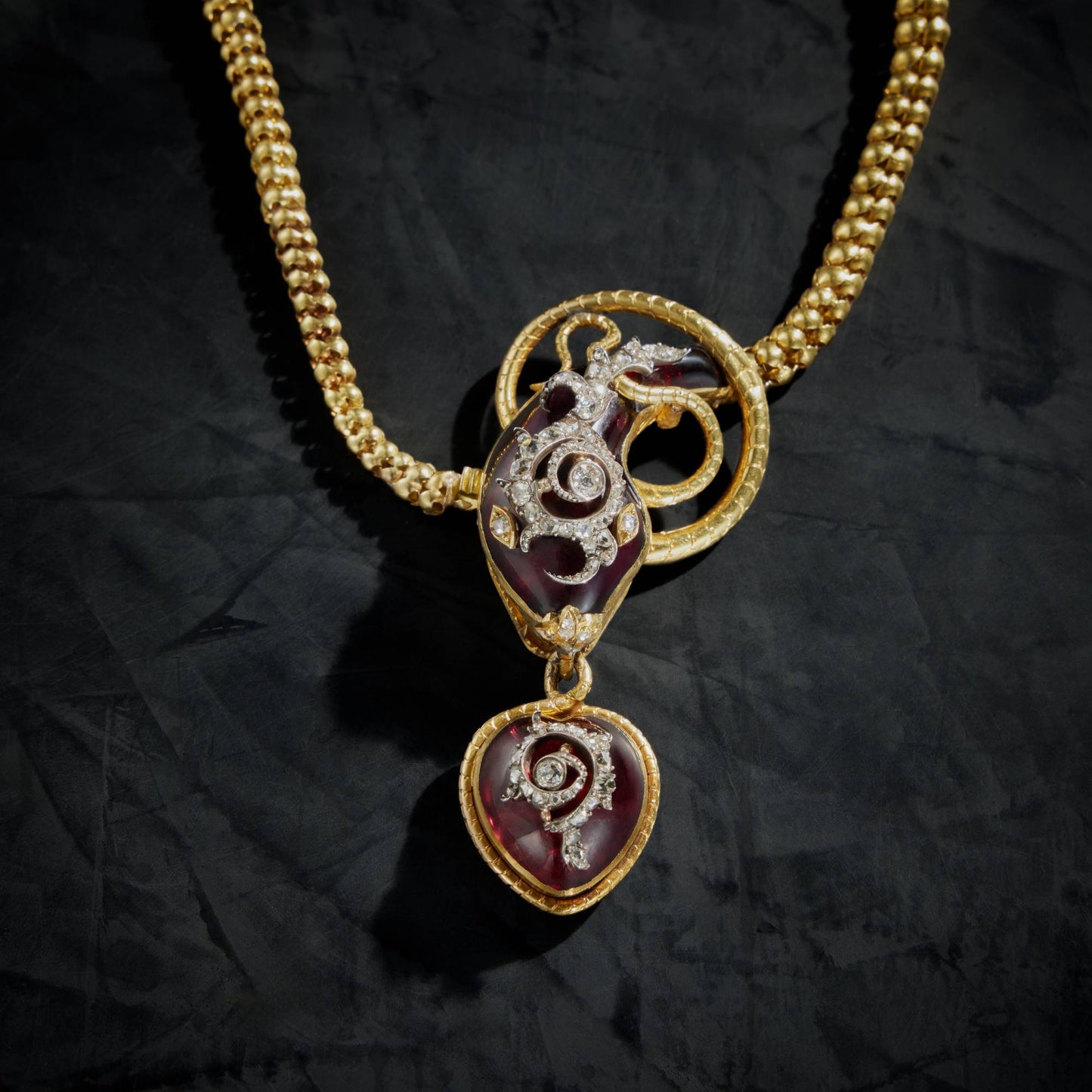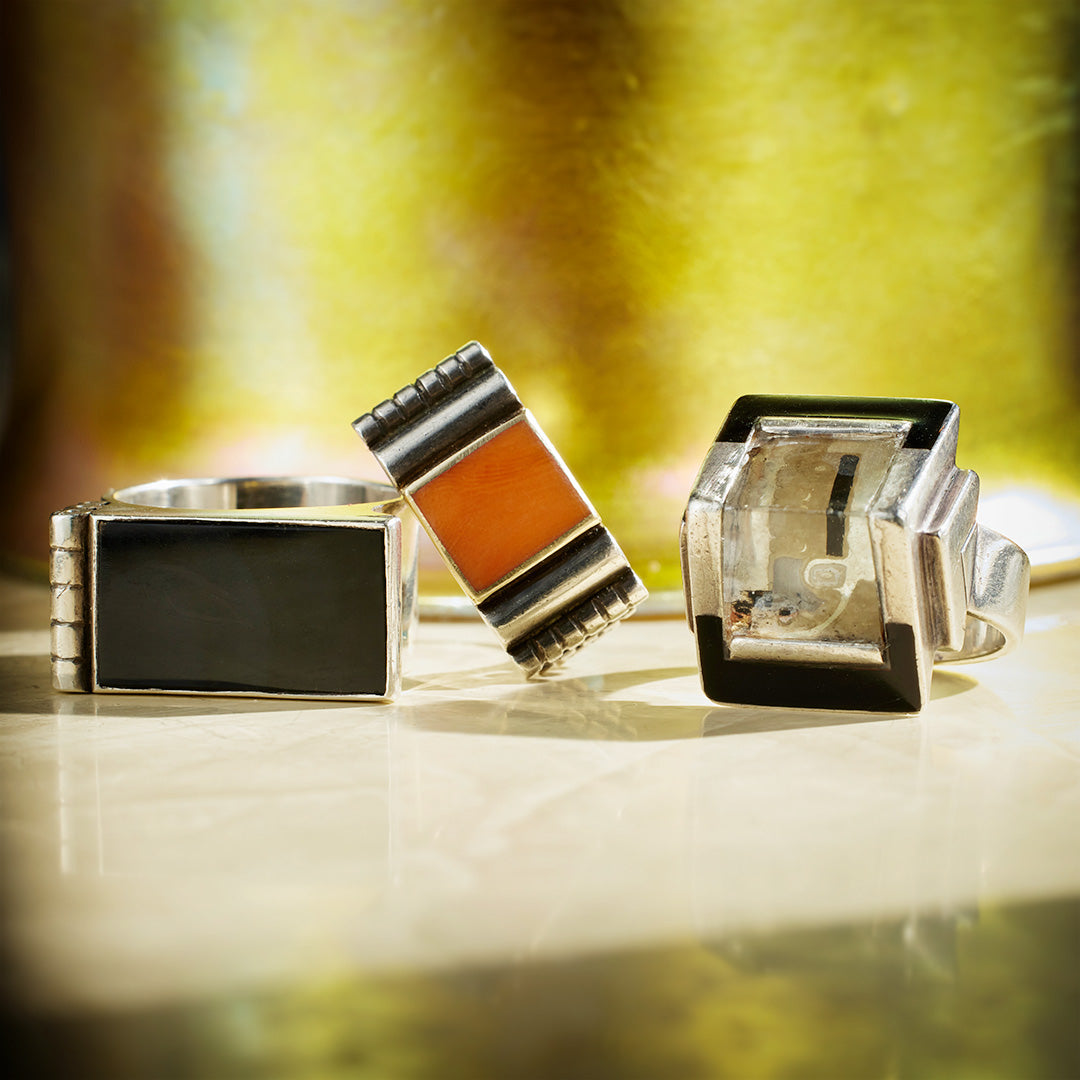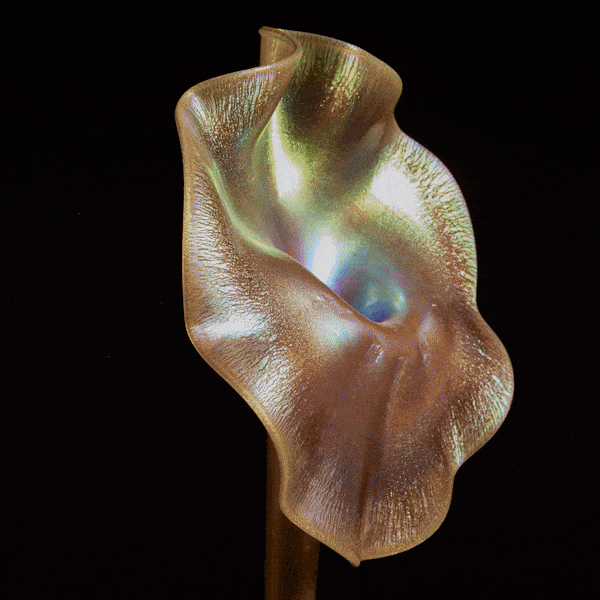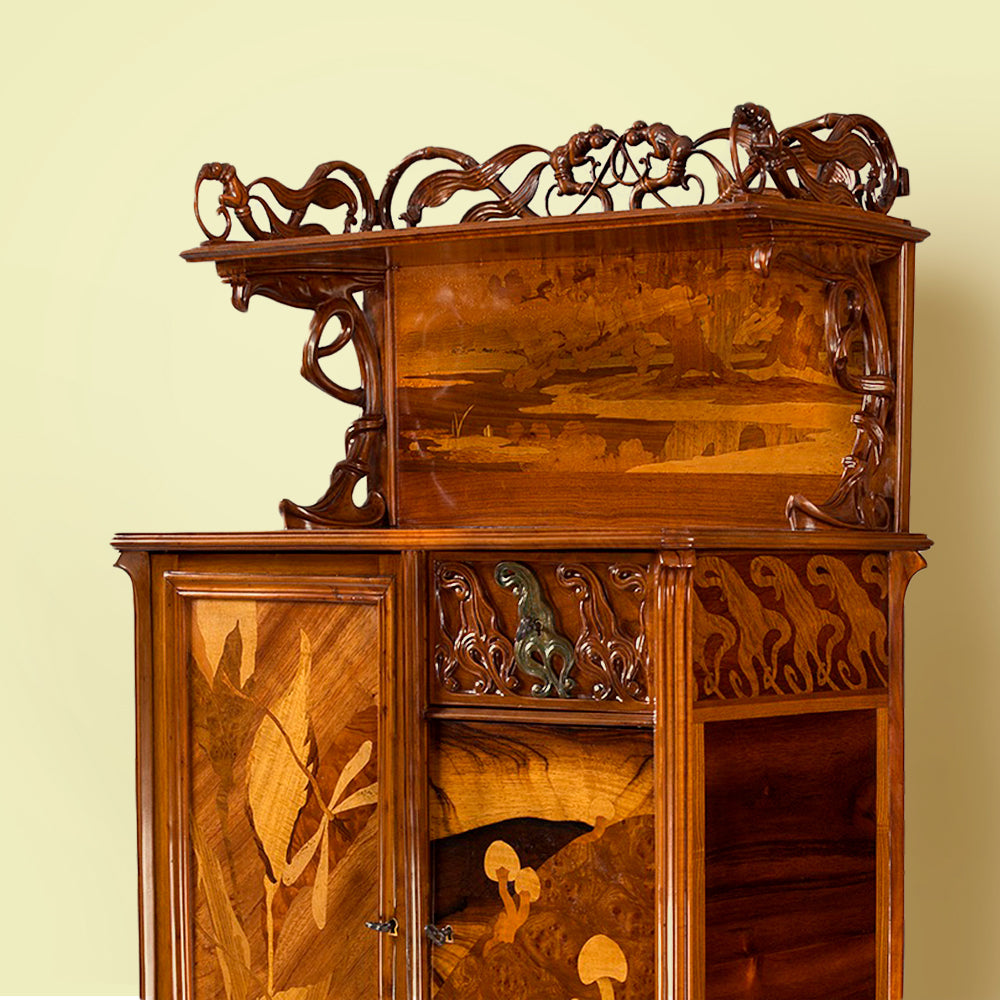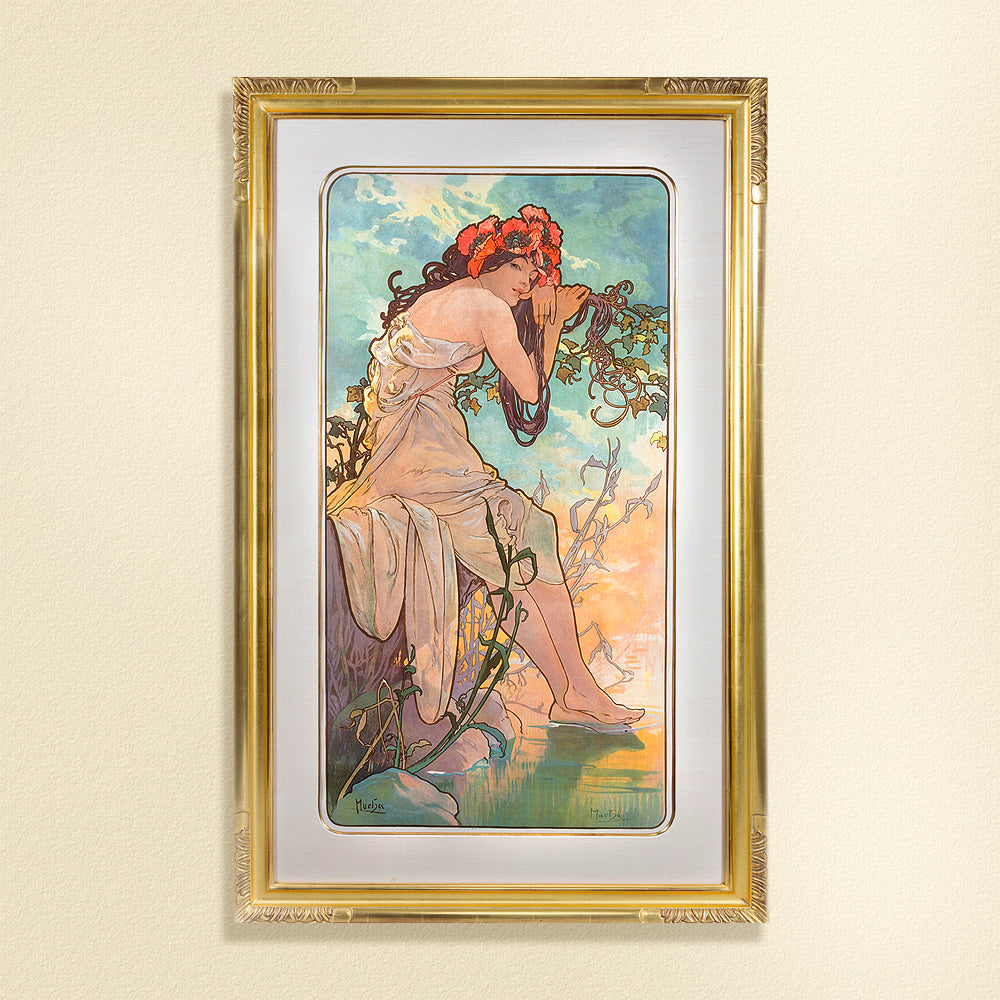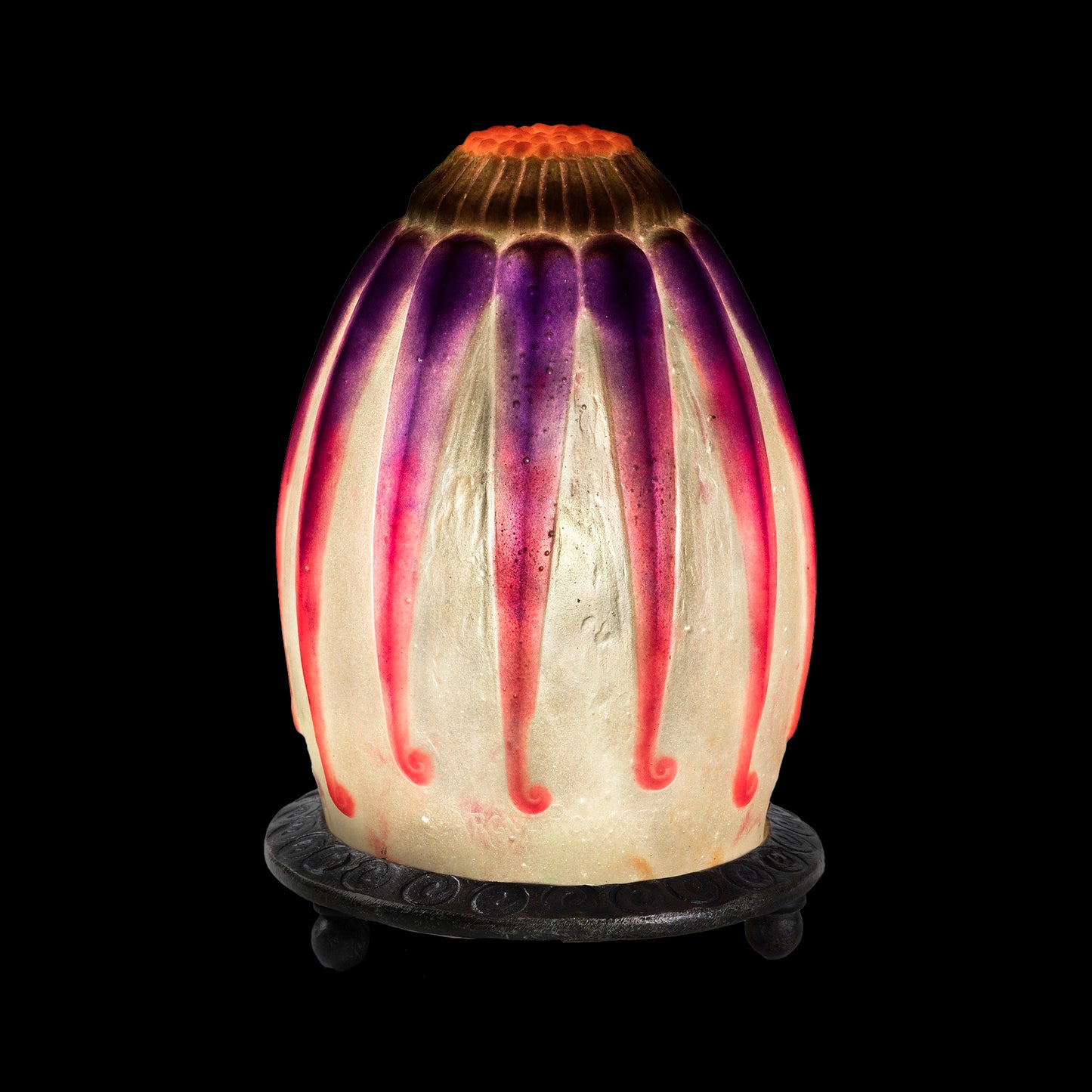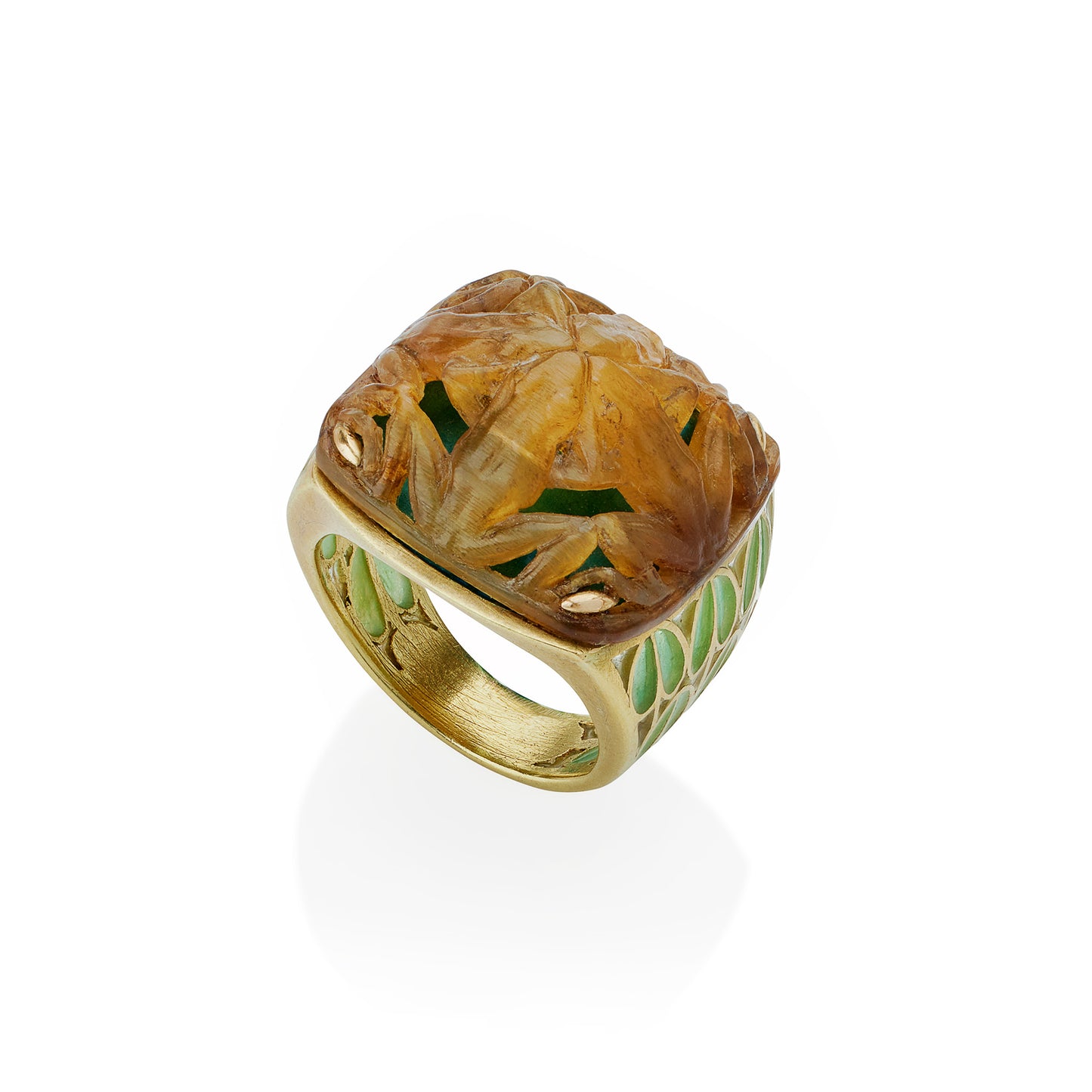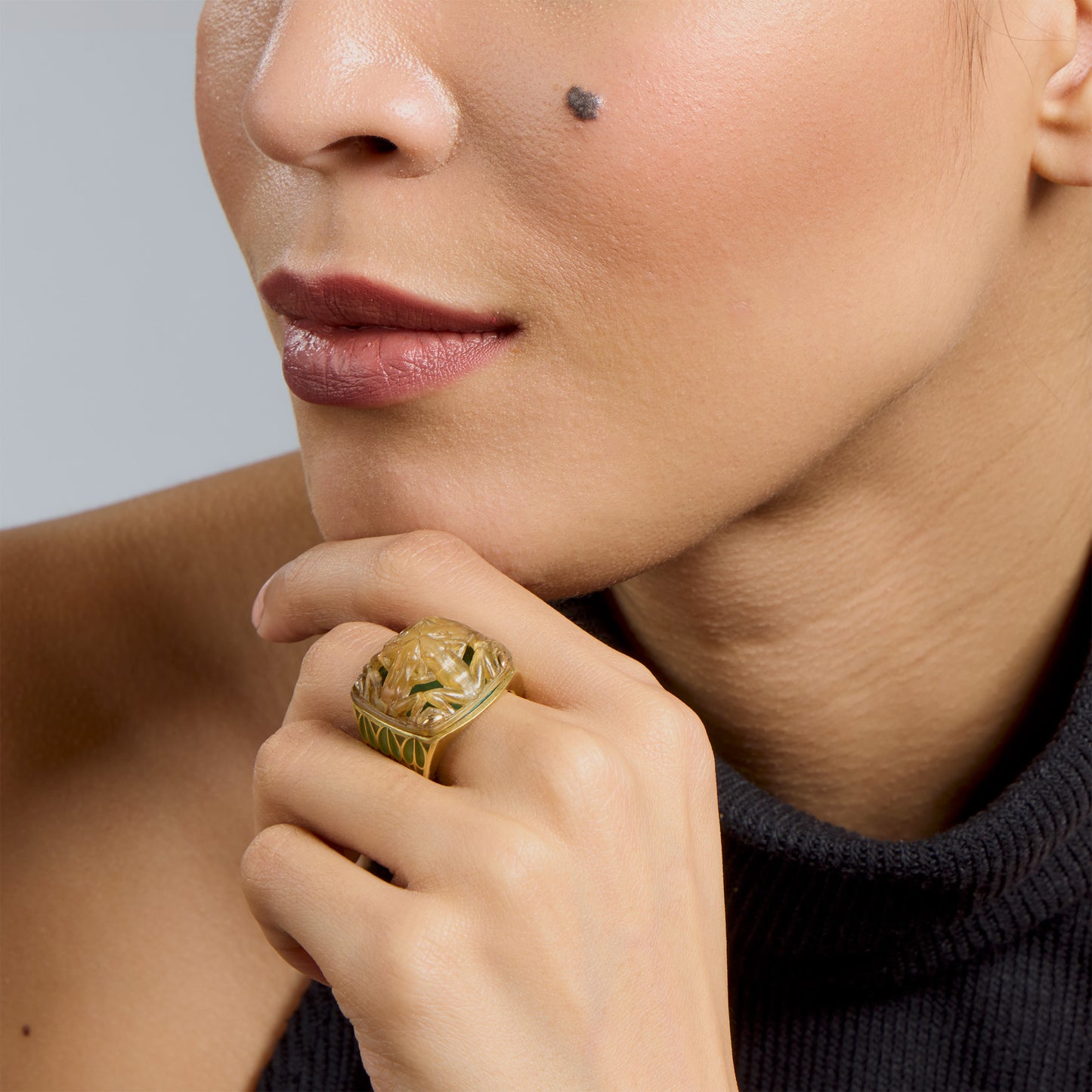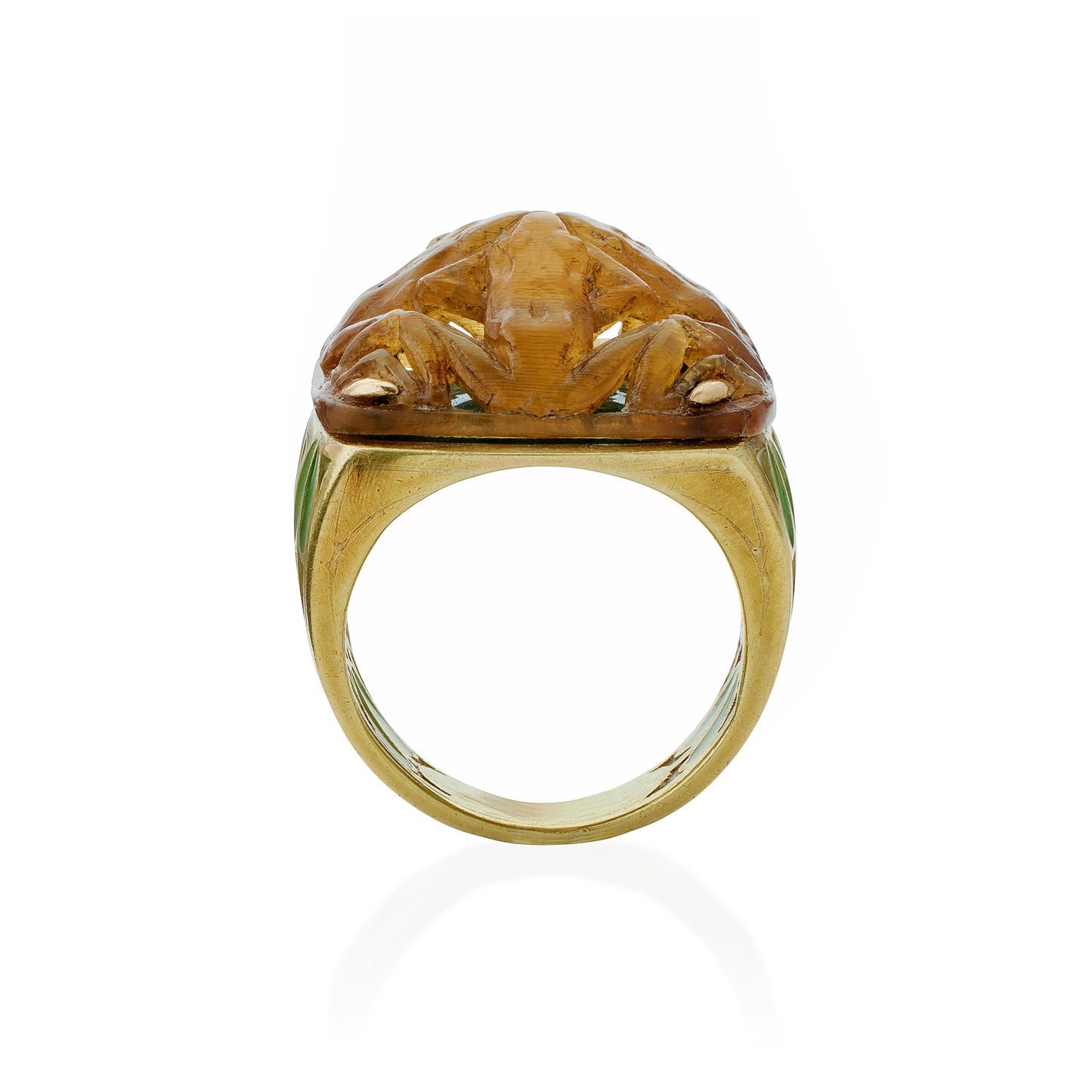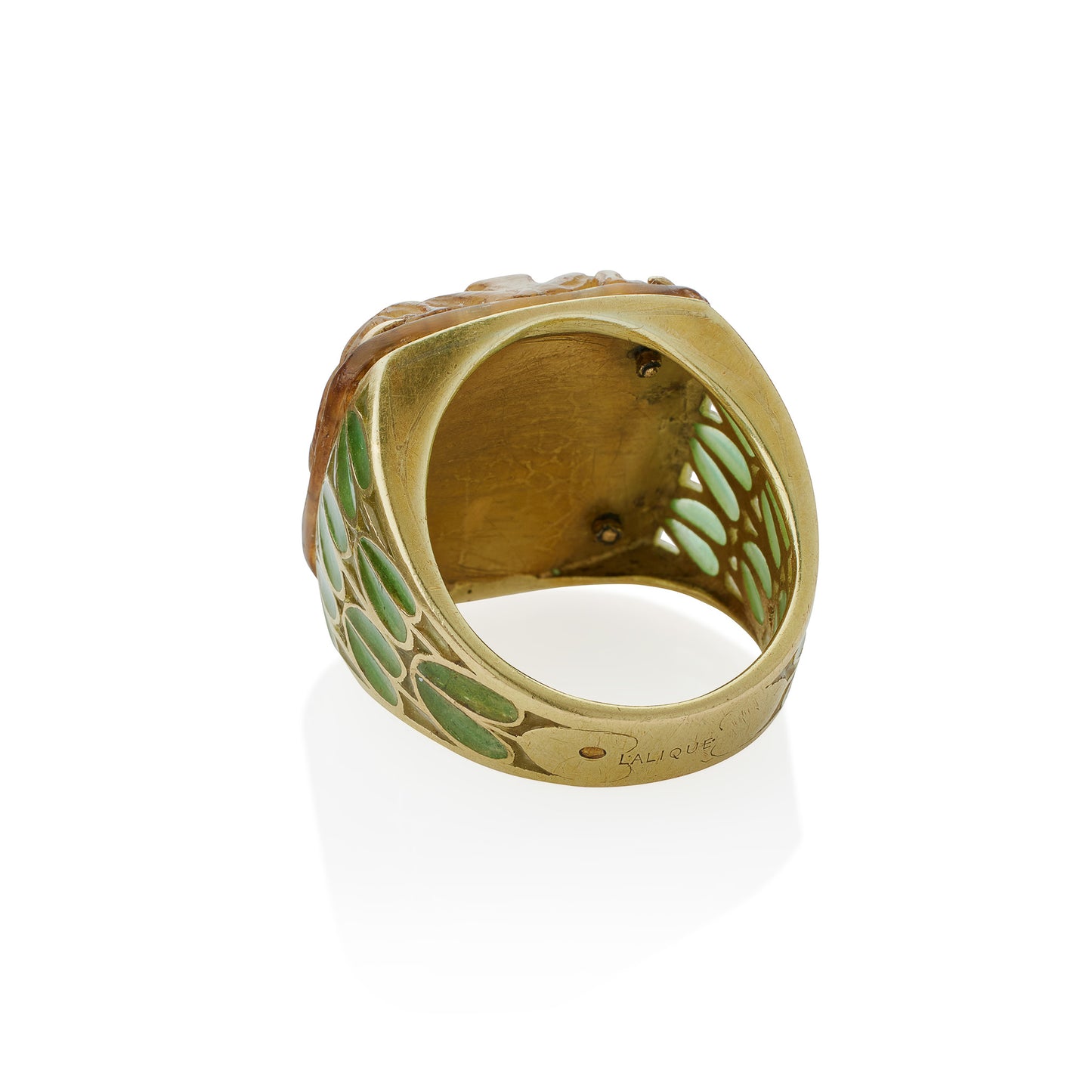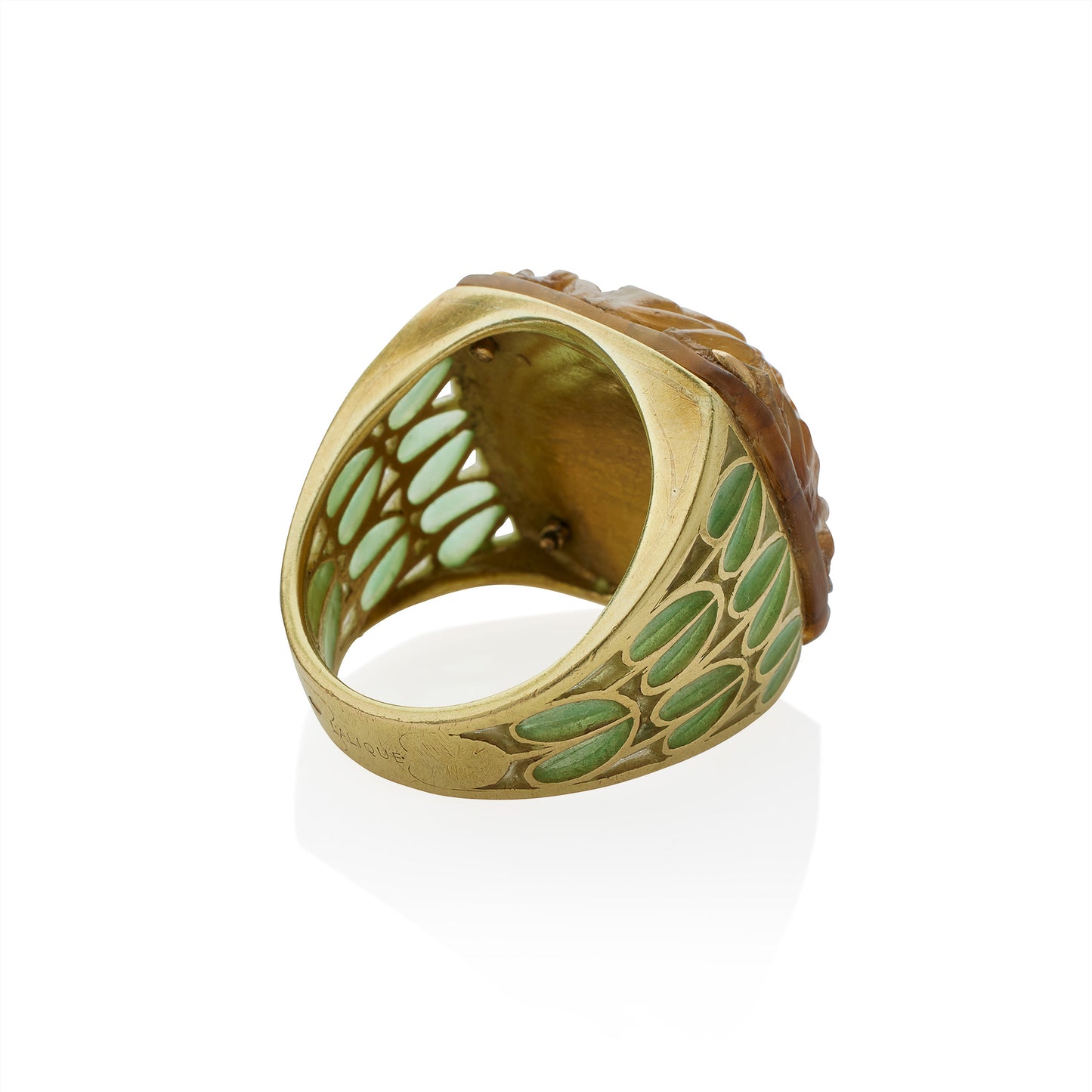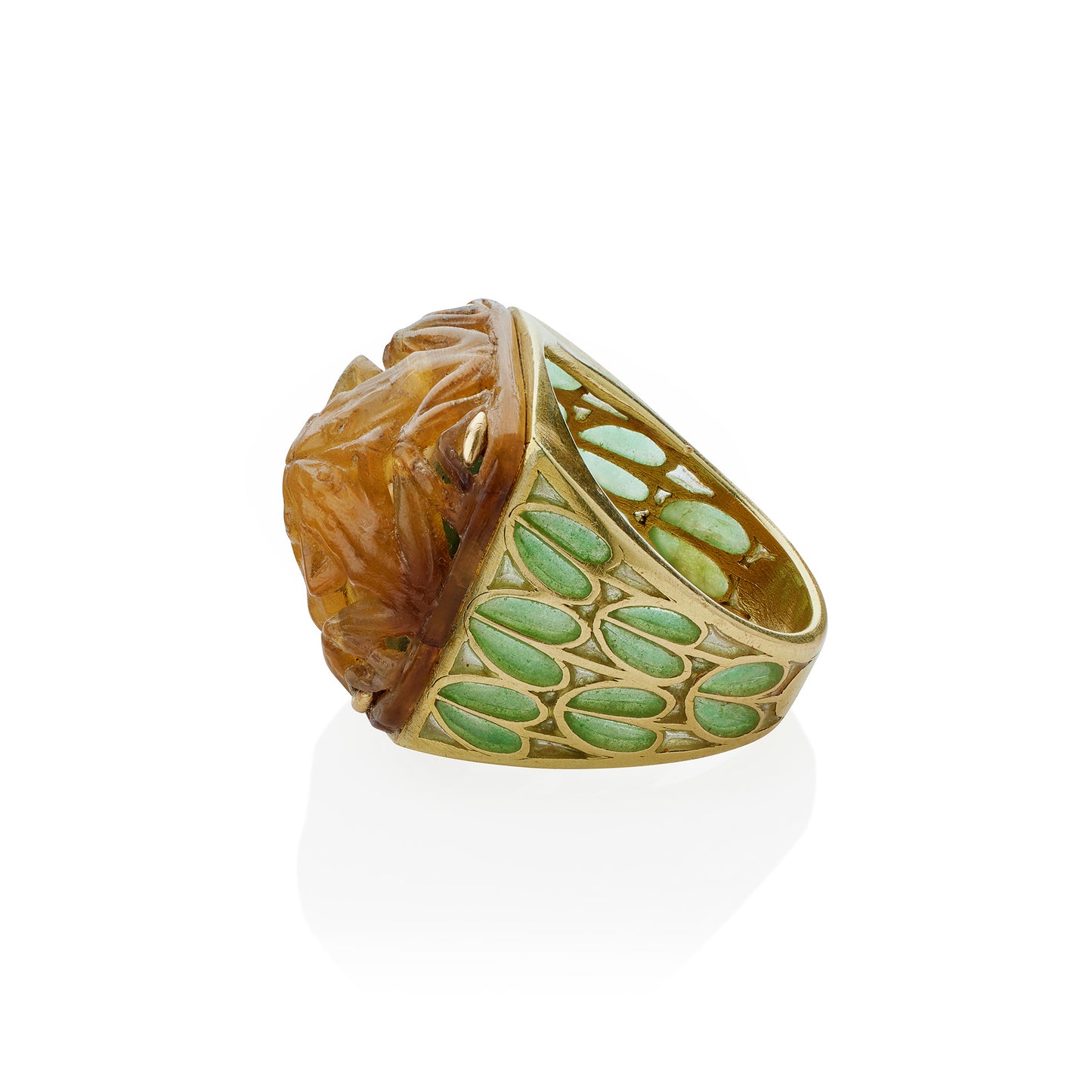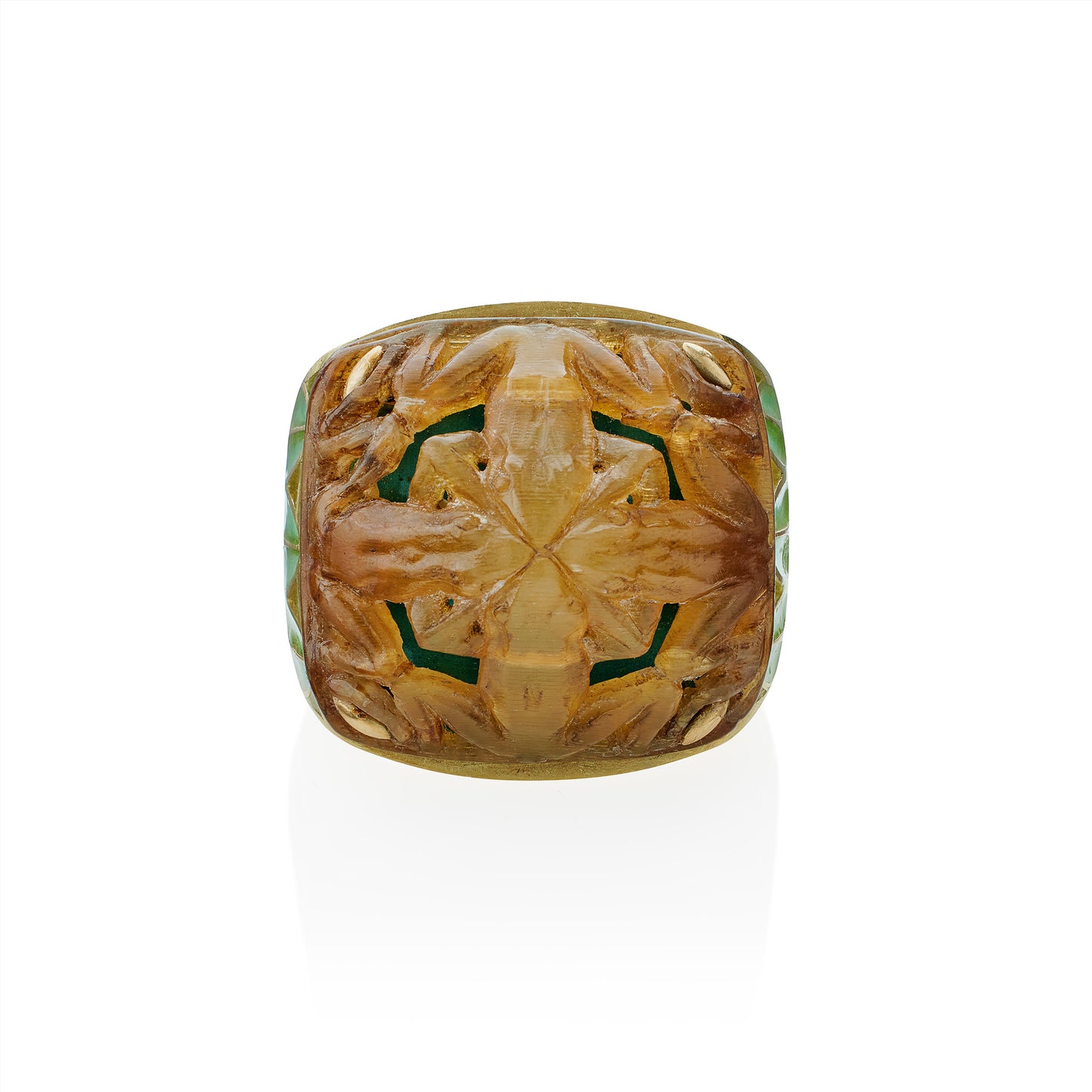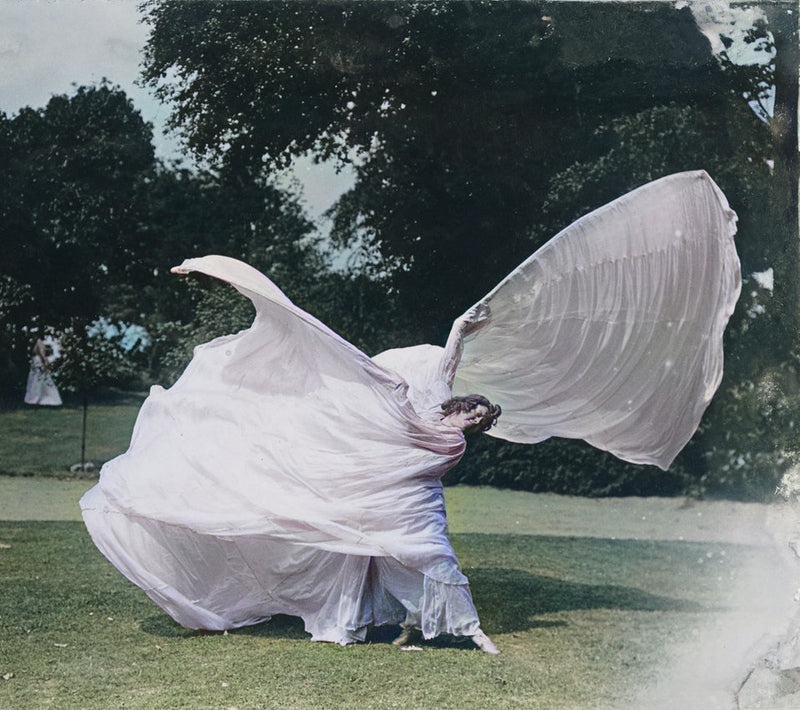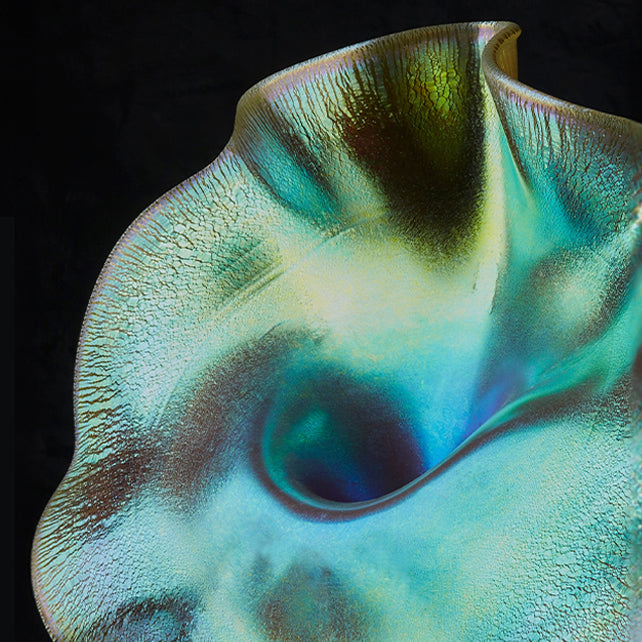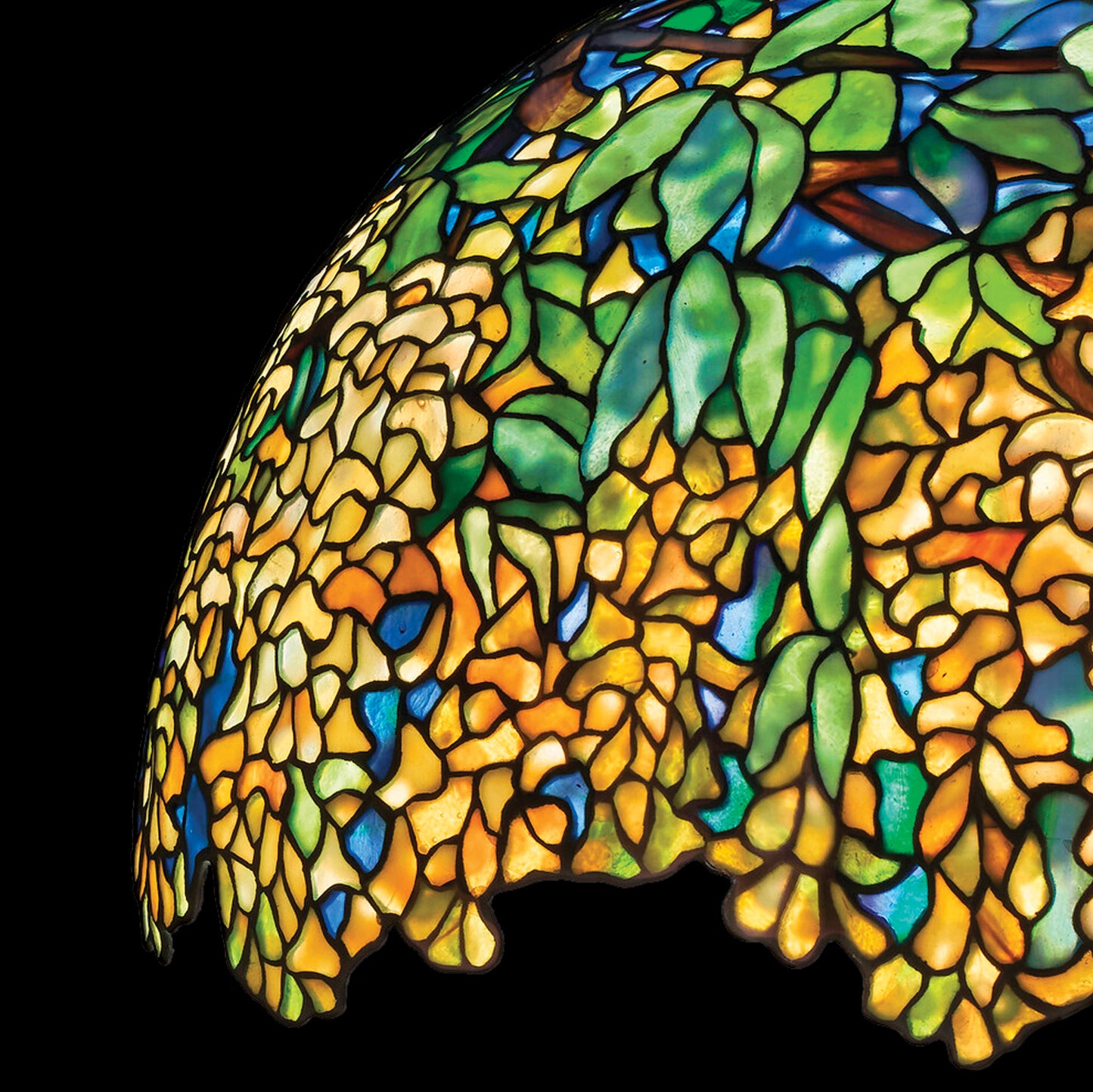René Lalique Art Nouveau Carved Horn and Plique-à-jour Enamel "Grenouilles" or Frogs Ring
Item #: R-21377
Artist: René Lalique
Country: France
Circa: 1903-1905
Size: 8.5
Materials: Carved horn; Plique-à-jour Enamel; 18K Gold (with small repair to one frog)
Signed: LALIQUE, French exportation mark
Provenance: The Sanfilippo Family Collection
Literature: A design drawing for a ring of this description is documented in René Lalique: Schmuck und Objets d'Art, by Sigrid Barten, cat. no. 1353, p. 470.
Item #: R-21377
Artist: René Lalique
Country: France
Circa: 1903-1905
Size: 8.5
Materials: Carved horn; Plique-à-jour Enamel; 18K Gold (with small repair to one frog)
Signed: LALIQUE, French exportation mark
Provenance: The Sanfilippo Family Collection
Literature: A design drawing for a ring of this description is documented in René Lalique: Schmuck und Objets d'Art, by Sigrid Barten, cat. no. 1353, p. 470.
According to Sigrid Barten, Lalique discovered horn's potential in jewelry in 1896, introducing to the art yet another substance that had formerly been deemed too humble. Most often reserved by Lalique for combs and tiaras, it is relatively rare to find a ring set with carved horn. As Lalique experimented with the material, he found its elasticity beautifully suited his purposes. The multi-step process he developed in-house rendered horn exceptionally transparent while being easy to mold, press, bend and shape. He could dye it in a variety of nuanced shades, with formulas resulting in brown, white and yellow, or blonde and gray, and was able to mount it with silver, gold and gems. He worked the molded horn with piercing tools, files and saws.
Though no image for design drawing for this ring is included in Barten's catalogue raisonné, it is nonetheless precisely described in the book, and has an inventory number of 907, which Barten dates to 1903-1905. Lalique created a limited number of works combining of horn and plique-à-jour enamel during this period 1899-1905. An enamel Dog Collar plaque of enamel and plique-à-jour enamel frogs "La Princesses au Sabbat" dates from 1899, while a necklace of glass frogs, enamel and diamonds shows the artist's continuing interest in the motif (c. 1902-1903). By 1905, Lalique was showing an increasing desire to experiment with the possibilities of glass to achieve light, color and sculptural effects, and began to turn to it in place of plique-à-jour enamel as glass allowed for the creation of imagery uninterrupted by the lines of the gold cells.
According to Sigrid Barten, Lalique discovered horn's potential in jewelry in 1896, introducing to the art yet another substance that had formerly been deemed too humble. Most often reserved by Lalique for combs and tiaras, it is relatively rare to find a ring set with carved horn. As Lalique experimented with the material, he found its elasticity beautifully suited his purposes. The multi-step process he developed in-house rendered horn exceptionally transparent while being easy to mold, press, bend and shape. He could dye it in a variety of nuanced shades, with formulas resulting in brown, white and yellow, or blonde and gray, and was able to mount it with silver, gold and gems. He worked the molded horn with piercing tools, files and saws.
Though no image for design drawing for this ring is included in Barten's catalogue raisonné, it is nonetheless precisely described in the book, and has an inventory number of 907, which Barten dates to 1903-1905. Lalique created a limited number of works combining of horn and plique-à-jour enamel during this period 1899-1905. An enamel Dog Collar plaque of enamel and plique-à-jour enamel frogs "La Princesses au Sabbat" dates from 1899, while a necklace of glass frogs, enamel and diamonds shows the artist's continuing interest in the motif (c. 1902-1903). By 1905, Lalique was showing an increasing desire to experiment with the possibilities of glass to achieve light, color and sculptural effects, and began to turn to it in place of plique-à-jour enamel as glass allowed for the creation of imagery uninterrupted by the lines of the gold cells.
